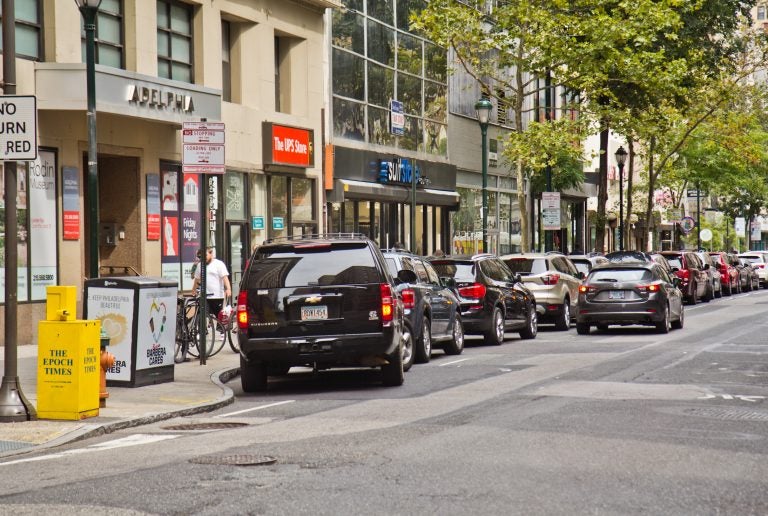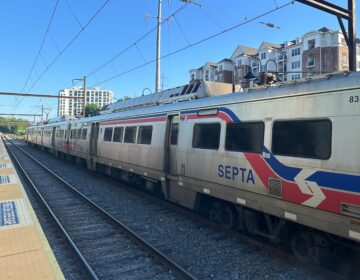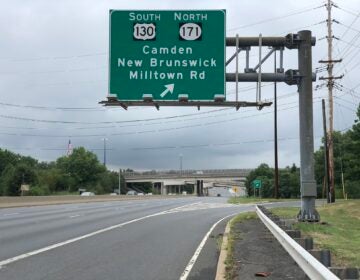Philly creates new loading zones to ease traffic in Center City
The city wants Center City delivery drivers to take a load off — without blocking traffic.

Cars double parked on the 1200 block of Chestnut St. (Kimberly Paynter/WHYY)
Mayor Jim Kenney wants Center City delivery drivers to take a load off — without blocking traffic.
As of Sept. 1, the city is reserving 80 to 100 feet of prime curbside real estate for delivery trucks and passenger vehicles, such as ride-hailing cars, to load and unload their precious cargo all day with a 20-minute time limit. The new all-day loading zones will be created as a six-month pilot on Chestnut Street between Sixth and 20th streets. The city is partnering on the trial with the Delaware Valley Regional Planning Commission (DVRPC), SEPTA, and the Philadelphia Parking Authority.
It’s an experiment designed to help Philly solve a growing congestion problem that shows no sign of abating as online shopping trends converge with a residential real estate boom that’s brought thousands of new downtown dwellers.
“People have legitimate things they’re trying to do on this corridor,” said Chris Puchalsky, director of policy and strategic initiatives for the city’s Office of Transportation, Infrastructure, and Sustainability. “So we’re trying to give them a space so that they can do their business without having to block traffic and get a ticket.”
An estimated 18,000 deliveries happen daily in Center City. Often, the trucks obstruct traffic while completing their drop-offs, contributing to congestion that slows down public transit and costs the city over $150 million, according to a report from Econsult Solutions.
And while some drivers are guilty of disregarding traffic and parking regulations, Mike Ruane, manager of freight and aviation programs for DVRPC, said others have no choice.
“When we see situations where trucks are blocking lanes or in places where they shouldn’t be, sometimes it’s as simple as that truck really just should’ve been parking in a loading zone or should’ve gone around back to the loading dock,” Ruane said. “But in many places, our research has shown that there just simply isn’t enough capacity. There’s nowhere for that truck driver to go.”
Travel times on Chestnut between 48th Street and City Hall increased for buses by 70% when comparing “free flow” times — the fastest observed hour of the day — to rush-hour traffic, according to the Econsult study. Trips ballooned from 14 to 24 minutes. That adds up to 1.7 million hours lost to congestion for passengers.
“It’s not really fair for 50 people on the bus [who] can’t get to work because one person is double-parked,” said Puchalsky.
Last fall, the city tried a four-month enforcement blitz on stretches of Chestnut and Market streets downtown. The crackdown on illegal parking and loading yielded results: Chestnut saw a 6.4% improvement in transit travel times from river to river, a 2.5-minute reduction on average per bus.
More than 2,000 tickets were issued on Chestnut Street during the program, 75% of which came from the Parking Authority.
This year’s anti-congestion pilot will extend through February.
In addition to the new loading zones, the city plans to install two new Indego stations in the area.
The new blue bike docks will be on the 1600 and 1800 blocks of Chestnut.
WHYY is your source for fact-based, in-depth journalism and information. As a nonprofit organization, we rely on financial support from readers like you. Please give today.







